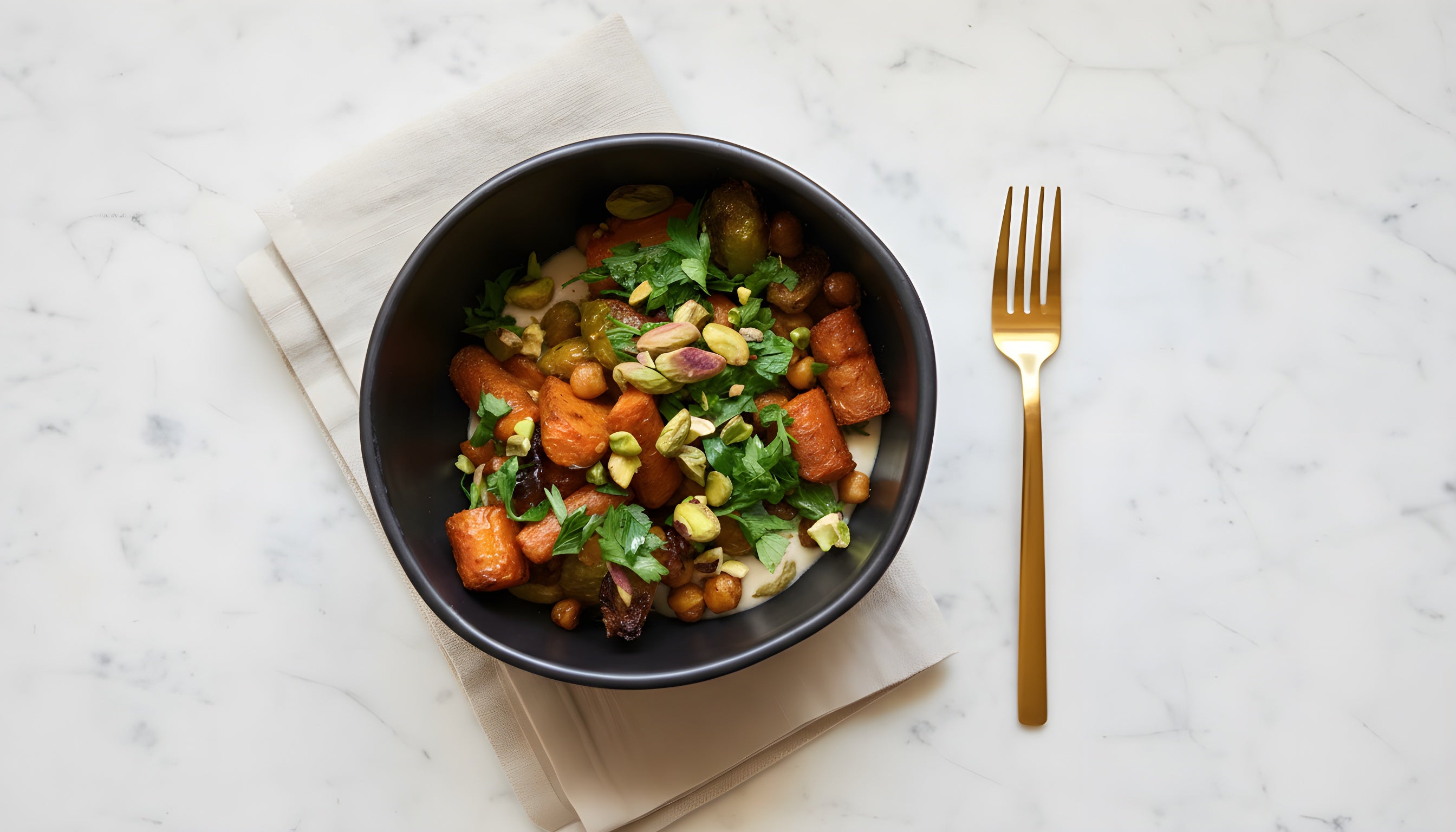Steak salad is perhaps my favorite overall recipe because it combines my favorite vegetable meal with my favorite meat. But your choice of steak can make or break the recipe. People say that I’m a good cook. Maybe I am, but I attribute most of these complements to always purchasing the best ingredients possible. And with steak, there is no exception. I always buy grass-fed, grass-finished organic beef.
Conventional beef and grass-fed beef are about as different as apples and oranges. I was reminded of this when driving through McFarland, CA two weeks ago (the setting of the Disney film a few years back) on my way to hike in Sequoia National Park. I passed not one, but two feedlots for cows. These are technically called concentrated animal feeding operations or CAFOs. Here, the cows are fed large amounts of corn in order to create the desired marbling of the beef. The beef industry calls this process “finishing” the cows with corn. They are given lots of antibiotics to ward off disease because the cows are in such close proximity and because of the large amount of feces they stand and sit in.
So conventional beef has antibiotics, steroids and is high in omega-6 fatty acids due to being fed the corn.
Grass-fed, grass-finished cows grow up in pastures eating grass. Once they are ready for butchering, they are not finished with corn, but rather are kept in the pasture or are fed hay. Organic grass-fed, grass-finished beef is free of antibiotics and steroids, and it is high in omega-3 fatty acids. Omega-6 fatty acids are pro-inflammatory whereas omega-3 fatty acids are anti-inflammatory.
It may take some work but find an organic butcher near you. Or find a farmer that raises cows naturally, even if they are not certified organic. I typically will reach out to three families, and we will buy a whole cow and each get one-fourth of the cow. Depending on how much beef you eat and how big your family is, this could last six months to a year.
Recipe
The salad recipe I use can be found here. I typically eat it by itself, but it is the salad recipe I reach for when making the steak salad.
4 x 4 oz steaks (sirloin, tenderloin or filet)
½ cup organic coconut oil
4 tsp salt
4 tsp pepper
Directions
I use four-ounce sirloin, tenderloin, or filet steaks on each person’s serving of the steak salad. It is important not to overcook grass-fed beef, so I pan sear them in a frying pan with the coconut oil because it gives me more control over the heat. I like coconut oil because it has a high smoke index. Turn on the stove to high heat and let your pan heat up. Pat down each steak with a paper towel to dry them prior to placing them into the frying pan. Liberally salt and pepper each side of the steak either before it’s placed into the frying pan, or when it’s in. Placing the dried steaks into the frying pan at high heat will sear the steak and keep in the moisture. Flip the steak after 30-60 seconds to sear the other side.
Because I am not worried about the same diseases from conventional beef, I cook my steak medium rare. The more your grass-fed, grass-finished steak is cooked, the tougher it will be, so keep this in mind.
Once cooked, cut your steak in one-fourth inch sections. Place on your salad. Bon Appétit!







0 Comment